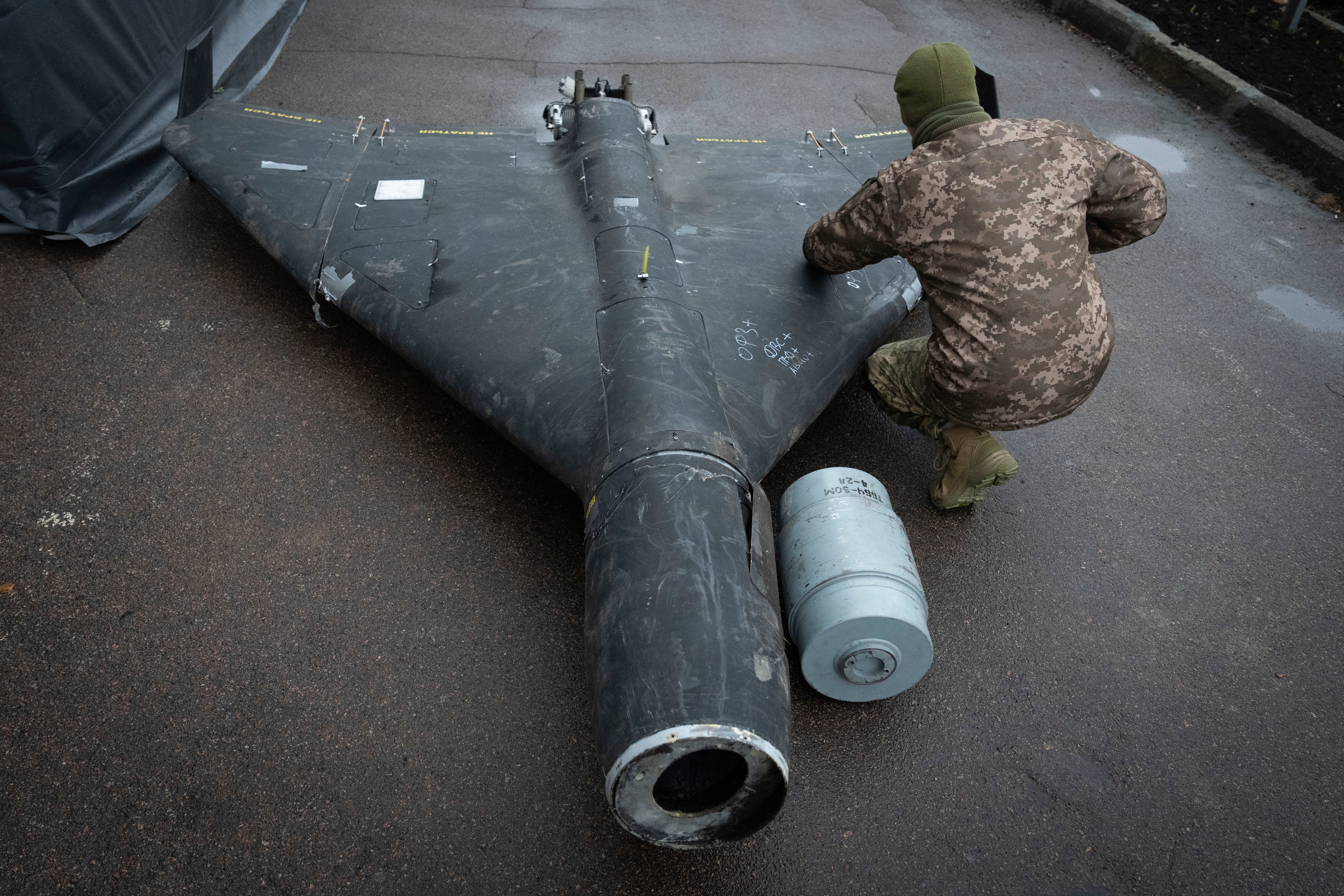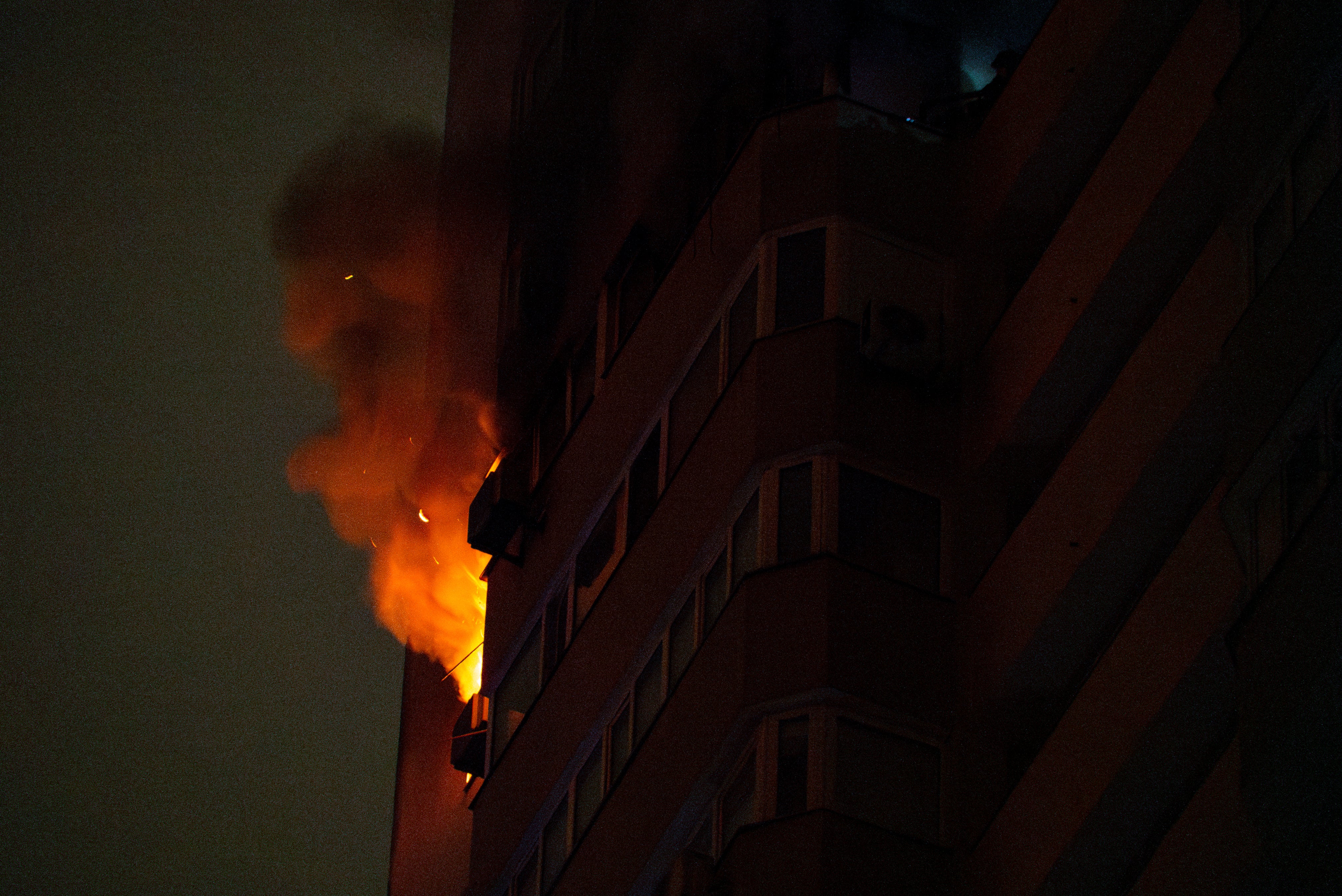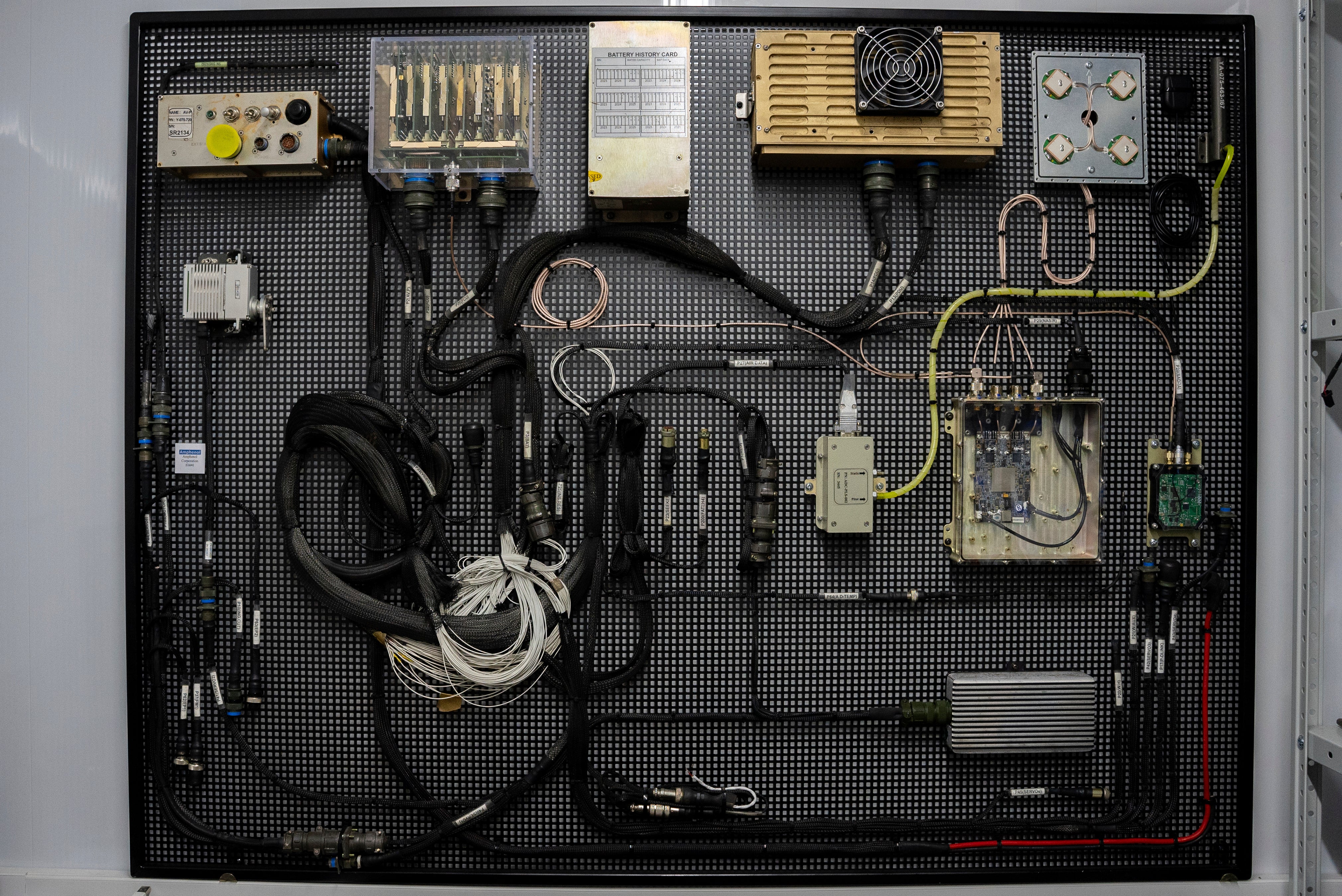
In a secret factory in central Russia, engineers are manufacturing hundreds of decoy drones meant to overwhelm Ukrainian defences as they try to protect against a horrific new weapon.
The plant in Russia’s Alabuga Special Economic Zone recently started churning out thermobaric drones alongside the decoys, an Associated Press investigation has found. The thermobaric warheads create a vortex of high pressure and heat that can penetrate thick walls. They suck out all the oxygen in their path, and have a fearsome reputation because of the injuries inflicted even outside the initial blast site: Collapsed lungs, crushed eyeballs, brain damage.
Moscow came up with the plan for decoys in late 2022 and codenamed it Operation False Target, according to a person familiar with Russia’s drone production who spoke on condition of anonymity because the industry is highly sensitive. The idea was to launch armed drones along with dozens of decoys, sometimes stuffed with rags or foam, and indistinguishable on radar from those carrying real bombs. Ukrainian forces must make split-second decisions about how to expend scarce resources to save lives and preserve critical infrastructure.
“The idea was to make a drone which would create a feeling of complete uncertainty for the enemy. So he doesn’t know whether it’s really a deadly weapon ... or essentially a foam toy,” the person said. With the thermobarics, there is now a “huge risk” an armed drone could deviate from its course and end up in a residential area where the “damage will be simply terrifying”, he said.

In recent weeks, decoys have filled Ukraine’s skies by the dozens, each one appearing as an indistinguishable blip on military radar screens. During the first weekend of November, the Kyiv region spent 20 hours under air alert, and the sound of buzzing drones mingled with the boom of air defences and rifle shots.
Unarmed decoys now make up more than half the drones targeting Ukraine, according to the person and Serhii Beskrestnov, a Ukrainian electronics expert whose black military van is kitted out with electronic jammers to down drones.
Both the unarmed decoys and the armed Iranian-designed Shahed drones are being built at a factory in Russia’s Alabuga Special Economic Zone, an industrial complex set up in 2006 about 600 miles east of Moscow to attract businesses and investment to Tatarstan. It expanded after the 2022 invasion of Ukraine and some sectors switched to military production, adding new buildings and renovating existing sites, according to satellite images analysed by The Associated Press.
In social media videos, the factory promotes itself as an innovation hub. But David Albright of the Washington-based Institute for Science and International Security said Alabuga’s current purpose is purely to produce and sell drones to Russia’s ministry of defence. The videos and other promotional media were taken down after an AP investigation found that many of the African women recruited to fill labour shortages there complained they were duped into taking jobs at the plant.
Russia and Iran signed a £1.35bn deal for the Shaheds in 2022, after Vladimir Putin’s forces invaded Ukraine, and Moscow began using Iranian imports of the unmanned aerial vehicles, or UAVs, in battle later that year. Soon after the deal was signed, production started in Alabuga.
In October, Moscow attacked with at least 1,889 drones – 80 per cent more than in August, according to an AP analysis tracking the drones for months. On Saturday, Russia launched 145 drones across Ukraine, just days after the re-election of Donald Trump threw into doubt US support for the country.
Since summer, most drones crash, are shot down or are diverted by electronic jamming, according to an AP analysis of Ukrainian military briefings. Less than 6 per cent hit a discernible target. But the sheer numbers mean a handful can slip through every day – and that is enough to be deadly.

The swarms have become a demoralising fact of life for Ukrainians.
Russian drone tactics continue to evolve. Now, more powerful missiles often follow close behind as air defences are exhausted by the drones. The most destructive are the ballistic and cruise missiles that fly many times faster than the drones, which buzz loudly and can be tracked by the naked eye.
Even the decoys can be useful to Russia. One decoy with a live-feed camera allows the aircraft to geolocate Ukraine’s air defences and relay the information to Russia in the final moments of its mechanical life.
Night after night, Ukrainian sharpshooters spring into action to down the drones with portable surface-to-air missiles.
One sharpshooter, who like most Ukrainian soldiers asked to be identified by his call-sign Rosmaryn, said he had shot down perhaps a dozen drones in all over nearly two years and saw one that was stuffed with rags and foam. Rosmaryn sees his adversary in almost human terms, describing the aircraft’s quest to outwit his small unit.
“It was part of a swarm, flying as one of the last ones,” he said. “When it’s in the sky, we can’t tell what kind it is, because everything is inside the drone. We only find out after it’s shot down.”
Many fly at 2,000 to 3,000 metres (6,500ft to around 10,000ft) before dropping to lower altitudes on their final approach, Rosmaryn said. Leaked videos suggest Ukraine is now using helicopters to shoot down the high-altitude drones.
Three decoys of Russian origin have crashed in Moldova in the past week, authorities there said.
Thanks to optical trickery, radar can’t distinguish a drone armed with a Shahed’s usual 50kg payload of explosives or with a thermobaric weapon – also known as a vacuum bomb – from those without a warhead or topped with live-feed surveillance cameras. There are also other even rougher-quality drones, armed and unarmed, but in fewer quantities than the Shahed-style unmanned aircraft.
That’s why, even knowing that decoys now make up most of an incoming swarm, Ukraine can’t afford to let anything through.
“For us, it’s just a point on the radar … It has speed, direction, and altitude,” said Col Yurii Ihnat, an air force spokesperson. “We have no way of identifying the exact target during flight, so we have to either jam them with electronic warfare or use firepower to neutralise them. The enemy uses these to scatter our attention.”
The engines and electronics for the armed Shaheds and decoys are a mix of Chinese and Western imports, according to fragments seen by The Associated Press at a Ukrainian military lab. Without them, the drones can’t fly. Despite nearly three years of sanctions, Moscow can still source the parts – largely from China and via third countries in Central Asia and the Middle East.

Halfway through the series of air alerts on 2 November, Ukrainian president Volodymyr Zelensky said the swarms of Shaheds, which he put at 2,000 for the month of October alone, were made possible by Western technology slipping through sanctions.
“Included in this many Shaheds are more than 170,000 components that should have been blocked for delivery to Russia. Microcircuits, microcontrollers, processors, many different parts, without which this terror would simply be impossible,” Zelensky said.
The joint manufacturing of the drones – some to carry bombs, others to divert attention – is saving Russia’s military money. Production of the decoys started earlier this year, and now the plant turns out about 40 of the cheaper unarmed drones a day and around 10 armed ones, which cost an estimated £40,000 and take longer to produce, according to the person with knowledge of Russian drone production.
The Russian news outlet Izvestia in late October said the aim of the decoys is to “weaken” the enemy by forcing it to waste ammunition before sending in armed Shaheds.
Both Beskrestnov and the person familiar with Russian drone production said engineers at Alabuga are also constantly experimenting, putting Moscow at the cutting edge of drone production. To make electronic interference harder, they add Ukrainian SIM cards, roaming SIMs, Starlinks, fibre optics – and can sometimes receive real-time feedback before the drones are jammed, downed or run out of fuel. Sometimes they attach a silver-painted foam ball to make the drone seem larger on a radar.
But the latest thermobaric variant is causing new anguish in Ukraine.

From a military point of view, thermobarics are ideal for going after targets that are either inside fortified buildings or deep underground.
Alabuga’s thermobaric drones are particularly destructive when they strike buildings, because they are also loaded with ball bearings to cause maximum damage even beyond the superheated blast, said Albright.
Beskrestnov, who is more widely known as Flash and whose black military van is kitted out with electronic jammers to down drones, said the thermobarics were first used over the summer and estimated they now make up between 3 per cent and 5 per cent of all drones.
“This type of warhead has the possibility to destroy a huge building, especially blocks of flats. And it’s very effective if the Russian Federation tries to attack our power plants,” he said.
They have a fearsome reputation because of the physical effects even on people caught outside the initial blast site, said Arthur van Coller, an expert in international humanitarian law at South Africa’s University of Fort Hare.
“With a thermobaric explosion, because of the cloud it would create, everything in its radius would be affected,” he said. “It creates massive fear in the civilian population. Thermobaric weapons have created this idea that they are really horrible weapons and that creates fear.”






